Stock Picks Recap for 11/19/20
With each stock's recap, we will include a (with market support) or (without market support) tag, designating whether the trade triggered with or without market directional support at the time. Anything in the first five minutes will be considered WITHOUT market support because market direction cannot be determined that early. ETF calls do not require market support, and are thus either winners or losers.
From the report, MGNI triggered long (with market support) and worked great:
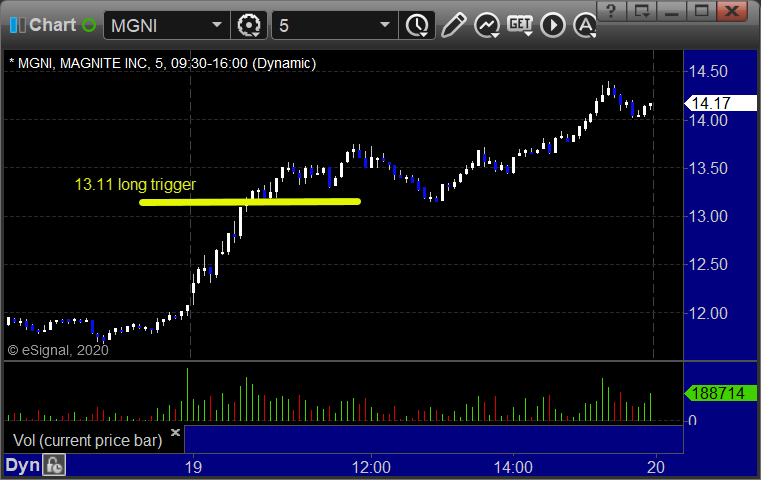
From the Messenger/Tradesight_st Twitter Feed, Rich's ROKU triggered long (with market support) and worked huge:
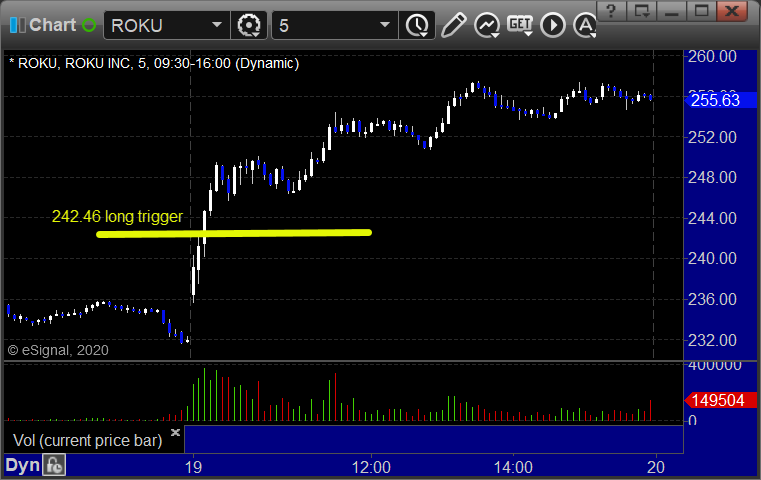
His MRNA triggered long (with market support) and worked great:
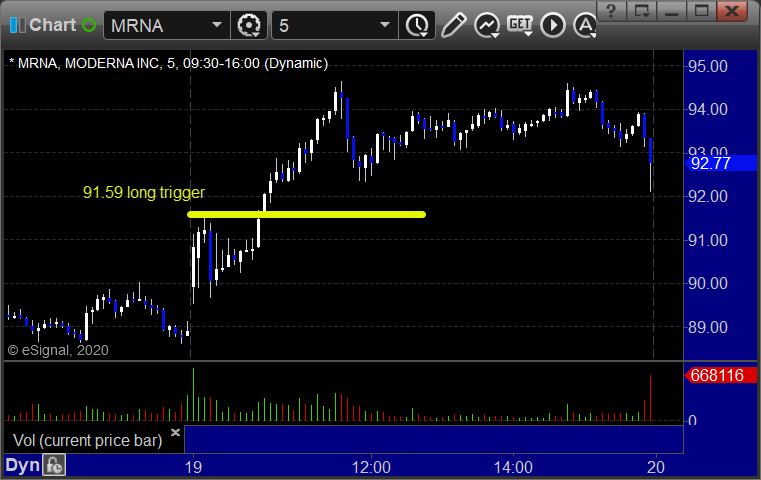
In total, that's 3 trades triggering with market support, all of them worked.
Futures Calls Recap for 11/19/20
The markets gapped down, filled the gap early, went flat for hours until after lunch, then moved up a little after lunch for a few minutes and that was it on 5.3 billion NASDAQ shares.
Net ticks: +4 ticks.
As usual, let's start by taking a look at the ES and NQ with our market directional lines, VWAP, and Comber on the 5-minute chart from today's session:
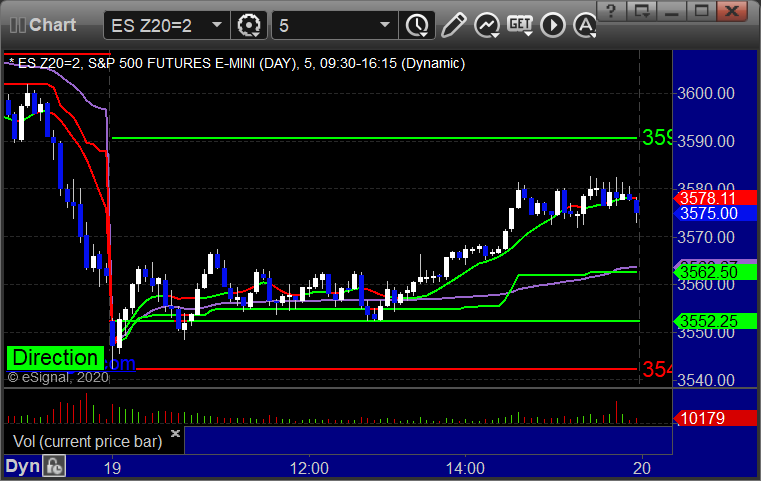
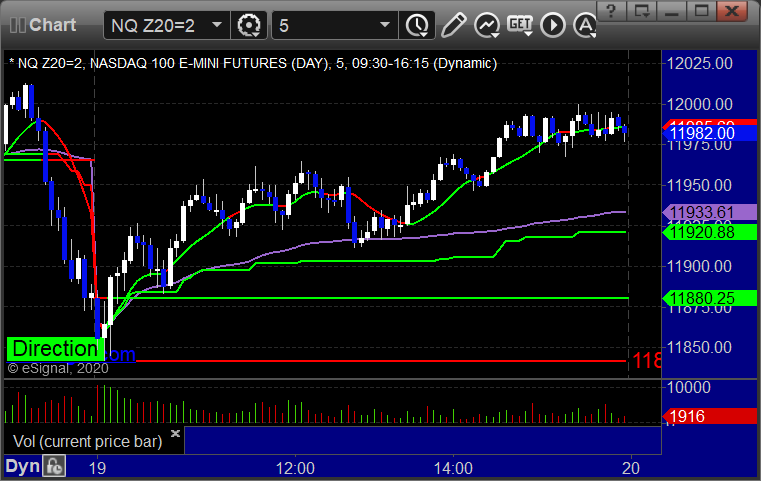
ES and NQ Opening and Institutional Range Plays:
ES Opening Range Play triggered short at A and worked enough for a partial, triggered long at B but too far out of range to take:
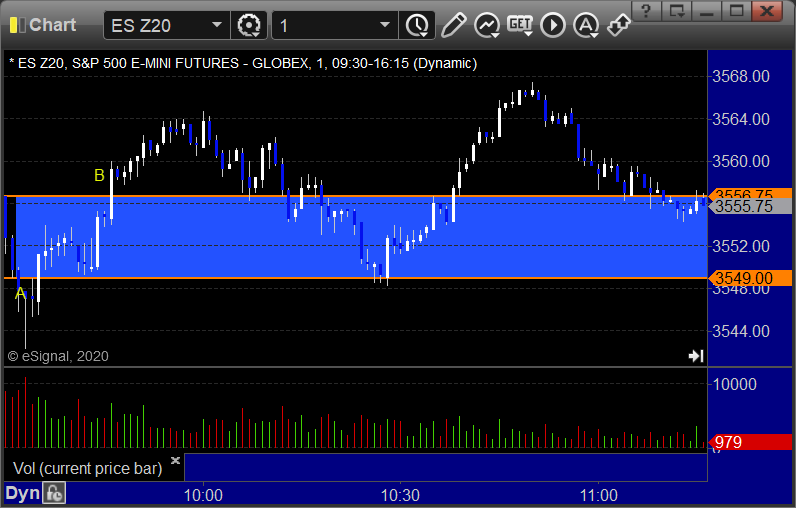
NQ Opening Range Play triggered too far out of range to take:
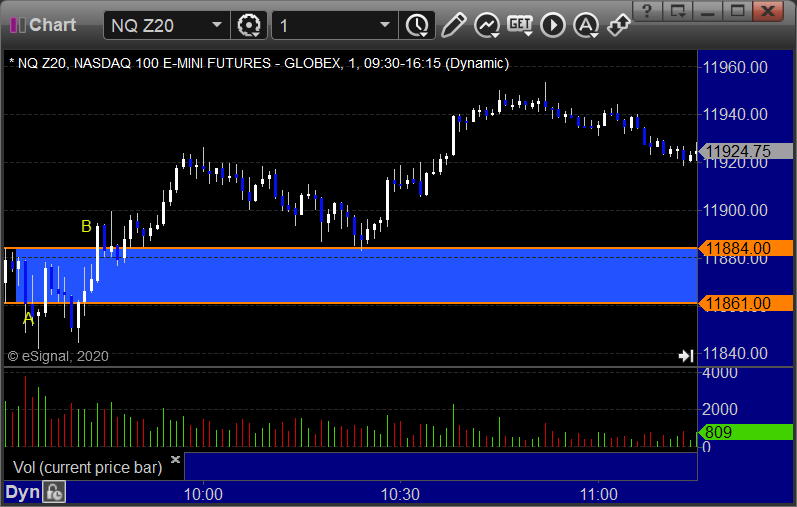
ES Tradesight Institutional Range Play:
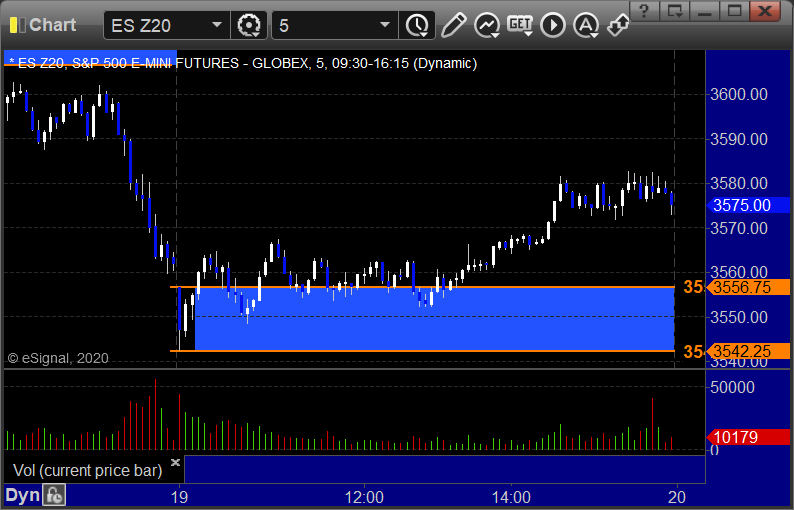
NQ Tradesight Institutional Range Play:
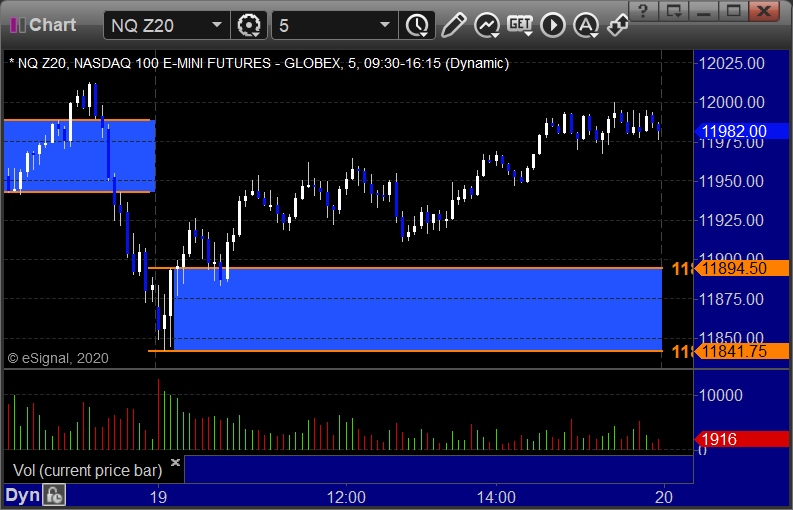
ES:
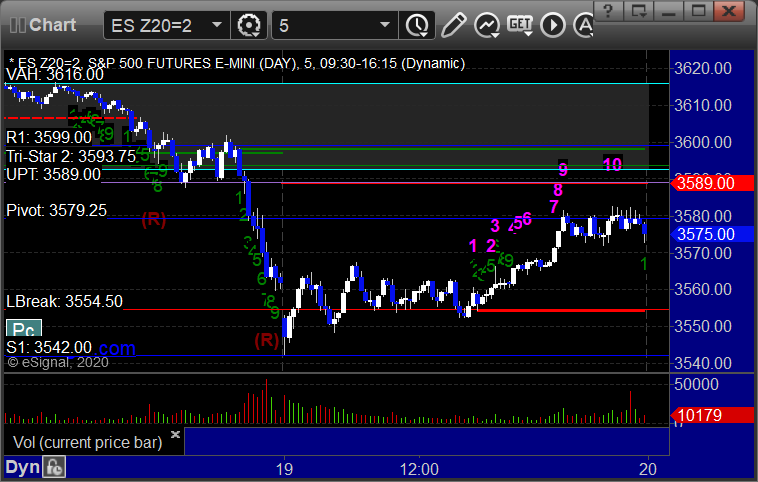
Forex Calls Recap for 11/19/20
A small winner for the session, which went nowhere again. See GBPUSD section below.
Here's a look at the US Dollar Index intraday with our market directional lines:
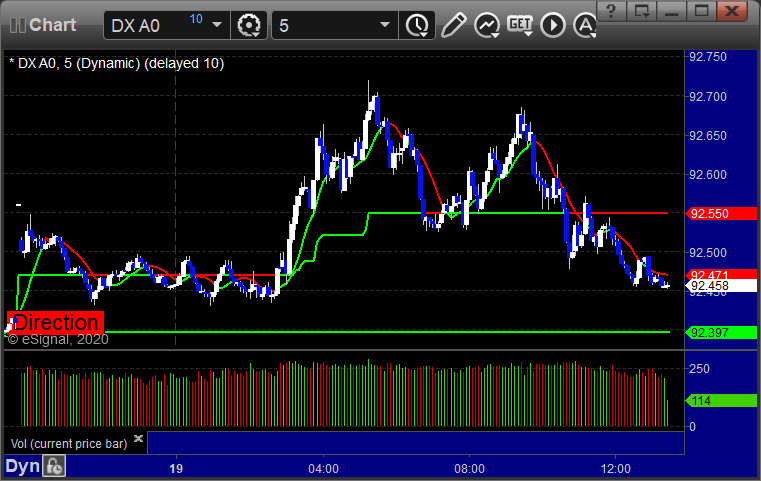
GBPUSD:
Triggered short at A, hit first target at B, stopped second half over the entry:
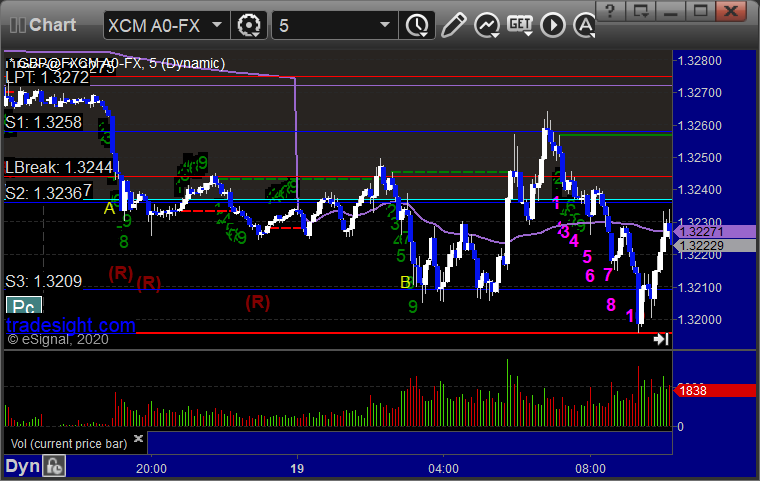
Stock Picks Recap for 11/18/20
With each stock's recap, we will include a (with market support) or (without market support) tag, designating whether the trade triggered with or without market directional support at the time. Anything in the first five minutes will be considered WITHOUT market support because market direction cannot be determined that early. ETF calls do not require market support, and are thus either winners or losers.
From the report, no calls.
From the Messenger/Tradesight_st Twitter Feed, Rich's DIS triggered long (with market support) and didn't work:
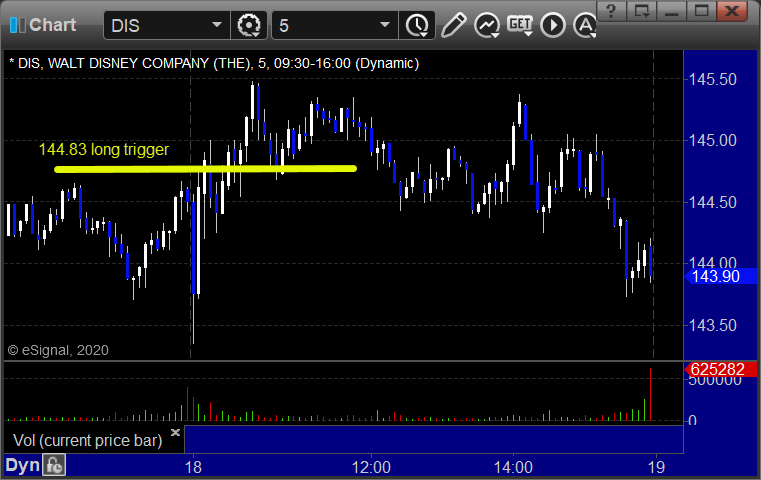
LYFT triggered long (with market support) and worked enough for a partial:
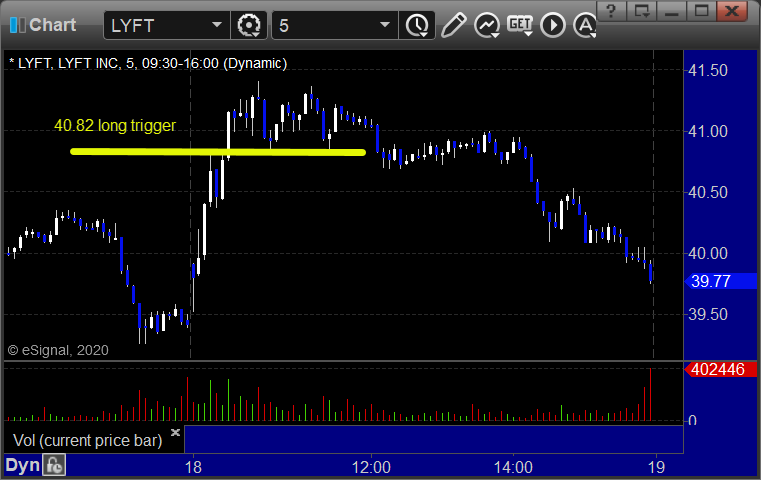
FB triggered short (with market support) and worked a little:

Rich's OIH triggered short (ETF, so no market support needed) and worked:
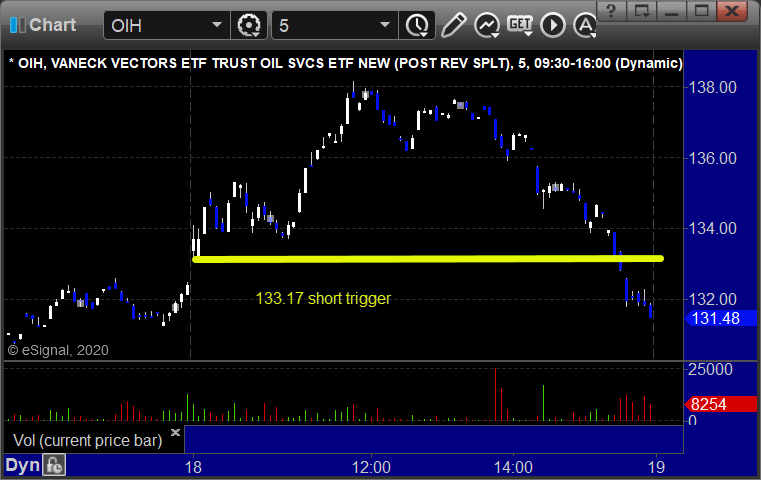
His VLO triggered short (with market support) and worked enough for a partial and then the market closed:
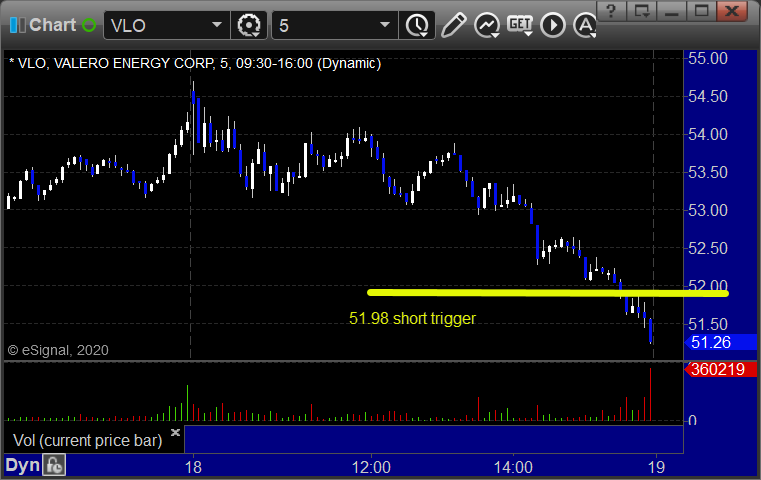
In total, that's 5 trades triggering with market support, 4 of them worked, 1 did not, most of them not much more than a partial.
Futures Calls Recap for 11/18/20
The markets opened flat and were flat all day until the last hour, then sold off on 4.6 billion NASDAQ shares.
Net ticks: -9 ticks.
As usual, let's start by taking a look at the ES and NQ with our market directional lines, VWAP, and Comber on the 5-minute chart from today's session:


ES and NQ Opening and Institutional Range Plays:
ES Opening Range Play triggered long at A and worked enough for a partial, triggered short at B and stopped over the midpoint, missed the partial by a tick:

NQ Opening Range Play:

ES Tradesight Institutional Range Play:

NQ Tradesight Institutional Range Play:

ES:
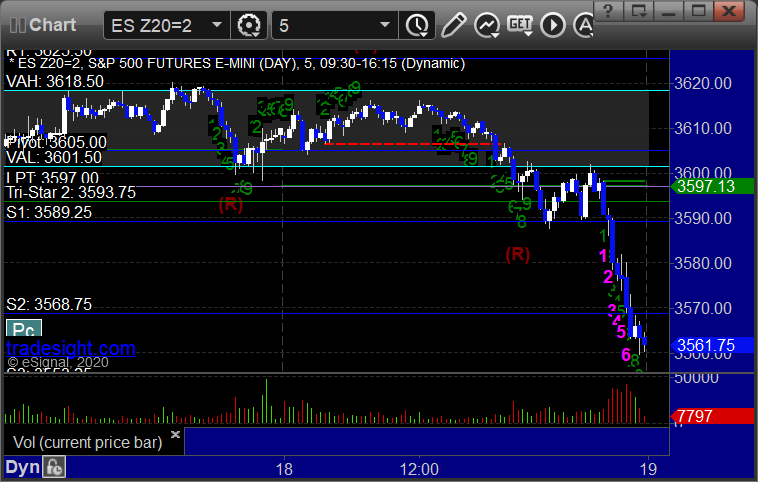
Forex Calls Recap for 11/18/20
I couldn't post calls due to the website issues last night, but it wouldn't have mattered. The trades wouldn't have worked as the GBPUSD went nowhere.
Here's a look at the US Dollar Index intraday with our market directional lines:
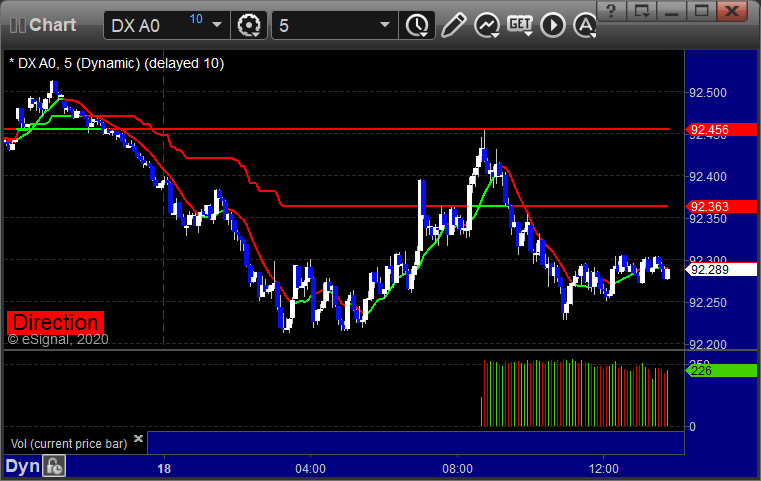
GBPUSD:
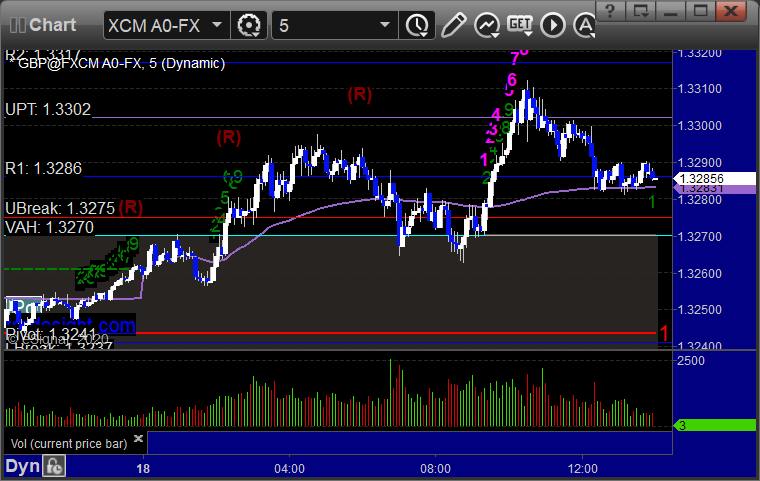
Stock Picks Recap for 11/17/20
With each stock's recap, we will include a (with market support) or (without market support) tag, designating whether the trade triggered with or without market directional support at the time. Anything in the first five minutes will be considered WITHOUT market support because market direction cannot be determined that early. ETF calls do not require market support, and are thus either winners or losers.
From the report, EBIX triggered long (without market support due to opening 5 minutes) and worked:
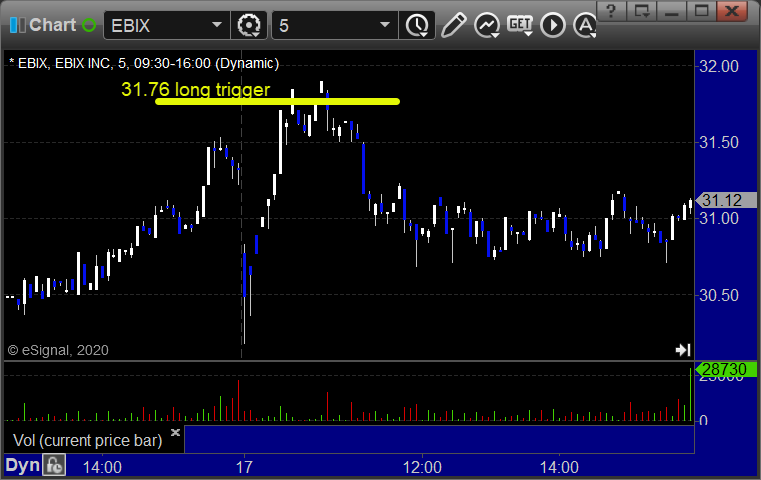
From the Messenger/Tradesight_st Twitter Feed, ROKU triggered long (with market support) and worked enough for a partial:

BABA triggered short (without market support) and didn't work:
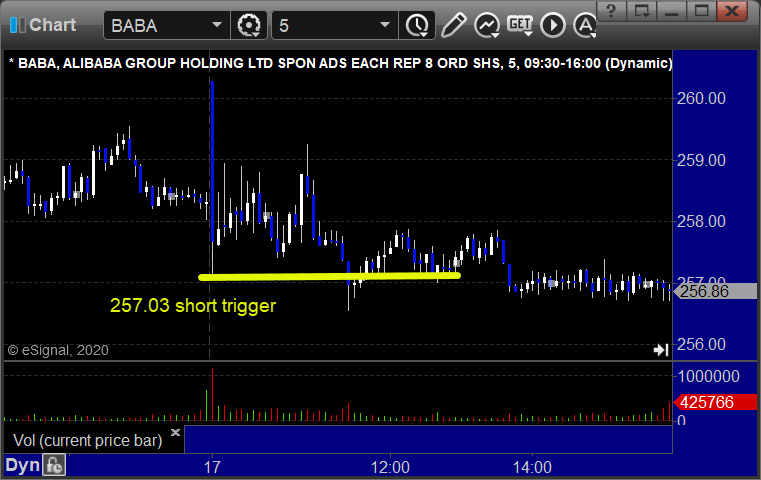
NVDA triggered short (with market support) and didn't work:
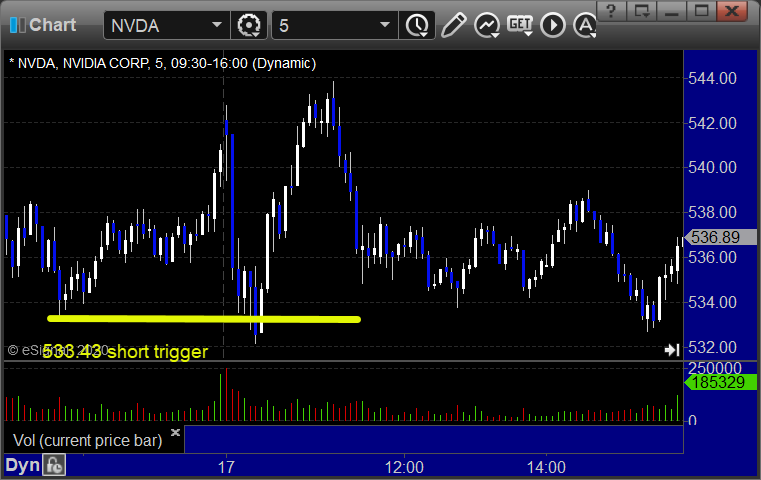
In total, that's 2 trades triggering with market support, 1 of them worked, 1 did not.
Futures Calls Recap for 11/17/20
The markets gapped down, went lower, and then came back a bit on 4.7 billion NASDAQ shares.
Net ticks: +4 ticks.
As usual, let's start by taking a look at the ES and NQ with our market directional lines, VWAP, and Comber on the 5-minute chart from today's session:


ES and NQ Opening and Institutional Range Plays:
ES Opening Range Play triggered short at A and worked enough for a partial:

NQ Opening Range Play both triggers were too far out of range to take:

ES Tradesight Institutional Range Play:

NQ Tradesight Institutional Range Play:

ES:
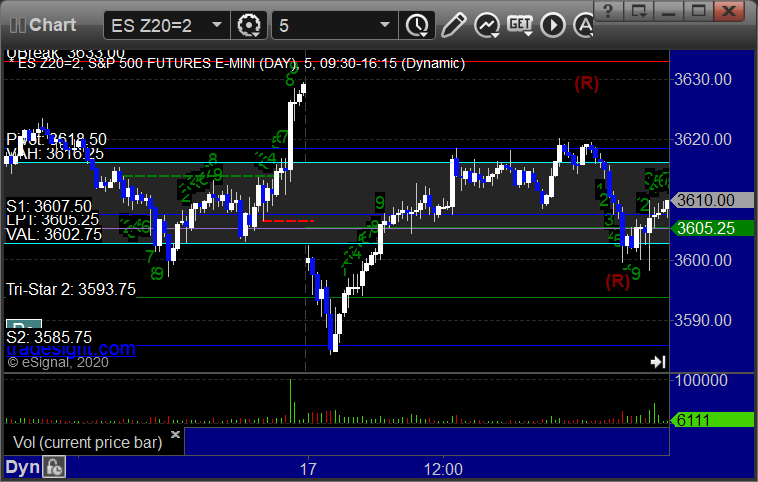
Forex Calls Recap for 11/17/20
A small winner for the session. See GBPUSD section below.
Here's a look at the US Dollar Index intraday with our market directional lines:
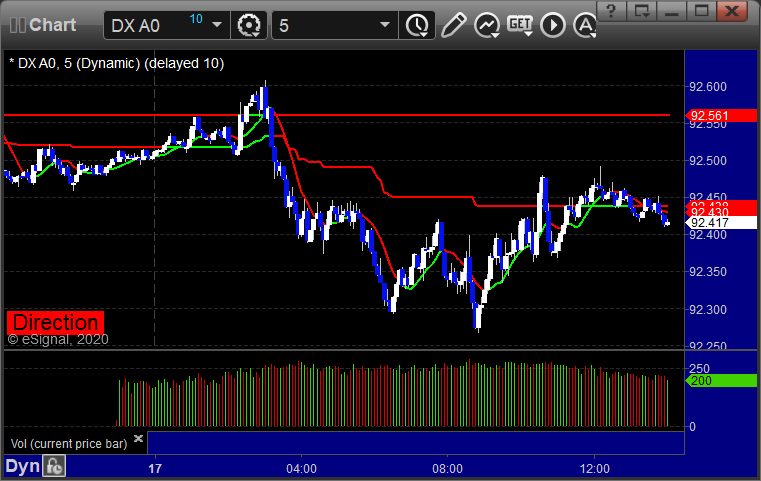
GBPUSD:
Triggered long at A, never stopped or hit first target, closed at B for a small gain:
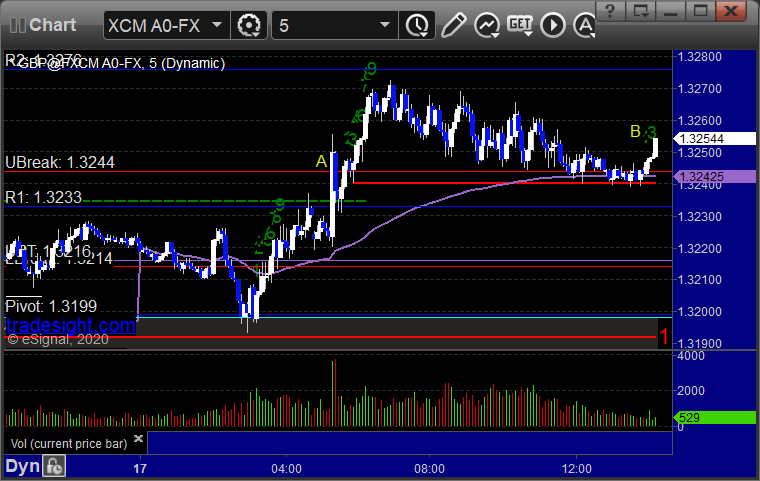
Tradesight July 2020 Stock Results
Tradesight has been providing stock calls daily since 2002. We post the results of our of our trades, winners and losers, in our reports and Market Blog every day. Some people might find it surprising to learn that while we track our Futures and Forex formal trade call results monthly, we don’t post anything beyond the trade reviews on our Stocks calls.
There is actually a very specific reason for this. I’ve never been a fan of trying to “hype” or “promote” something. Being profitable in trading is about learning what to do and getting yourself to make the right decisions. In Futures as well as in Forex, if we publish a call in advance, just about everyone should get the same fills and be able to get in and out at almost the same numbers. That isn’t always the case in stocks. It depends on how many shares you are trading and what the liquidity in the market for that stock is at the time. For that reason, I have already been hesitant to say “These are the exact results.” I would never want to try to suggest that someone would make a certain amount of dollars trading a certain number of shares or make a certain percentage. If I take a trade and sell it for a $0.30 gain, it makes a big statistical difference if someone else had to pay $0.05 more to get in and maybe got out for $0.02 less. That’s $0.23 instead of $0.30 even though the concept of the trade was fine.
However, after many requests, in October 2015, we started posting our results. You can see these monthly here.
In our system, you can basically break trades down into four categories: Big losers, small losers, small winners, and big winners.
In order to have any chance of succeeding in the markets, you have to have a system. There is no other way around it. I’ve been trading for 20 years now, and I’ve trained over 1000 people. You don’t make money if you don’t have a technically valid system for entry and exits.
Of the four categories of trades listed above, we simply don’t allow any of the first category, which is big losers. We always have a worst-case stop and we always stick to it. There should never be a scenario where you are still in a trade that is causing a significant loss if you follow our rules.
In terms of the other three categories, generally speaking, if you have about a third of your trades fall into each category, you should be making good money. In other words, if we have about 33% of our trades as small losers and 33% of trades as small winners, those basically would offset. That leaves the other 33% of so only as bigger winners, and that’s what we are here for. In our world, we count a loser as a trade that stops out (stops in our system are based on the price-level of the stock). We count a small winner as a trade that goes enough to make a partial and then either stops the second half of the trade under the entry or stops the second half of the trade slightly in the money, but no more than the partial was or so. Then the big winners are anything that keeps going beyond the partial.
So these were the results for June, which you can view here.
Tradesight Stock Results for June 2020
Number of trade calls that triggered with market support: 47
Number (and percent of total) of small losers: 13 (27.7%)
Number (and percent of total) of small winners: 16 (34%)
Number (and percent of total) of big winners: 18 (38.3%)
And for July?
Tradesight Stock Results for July 2020
Number of trade calls that triggered with market support: 42
Number (and percent of total) of small losers: 16 (38.1%)
Number (and percent of total) of small winners: 14 (33.3%)
Number (and percent of total) of big winners: 12 (28.6%)
Not the best month even though we had over a 60% win rate. We did have many big winners, so nothing to complain about. Let's just stay focused for summer.
